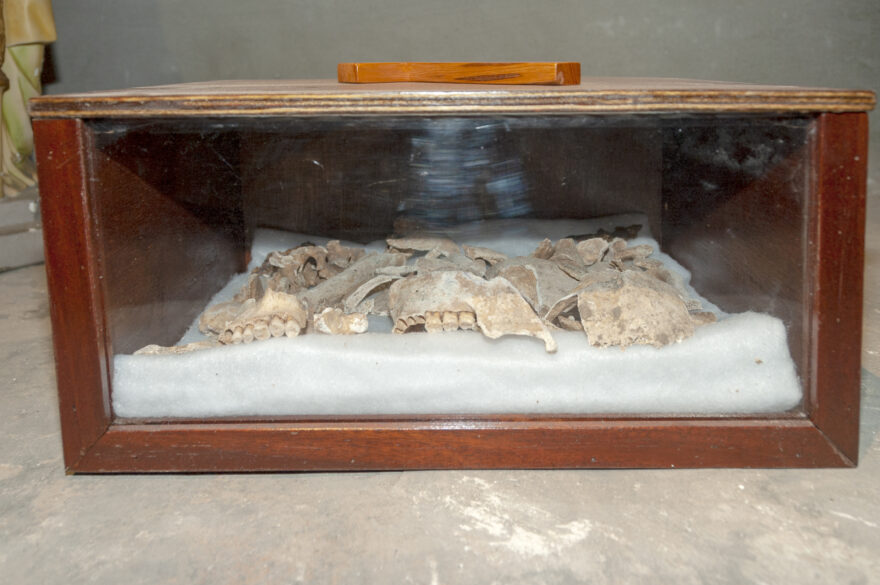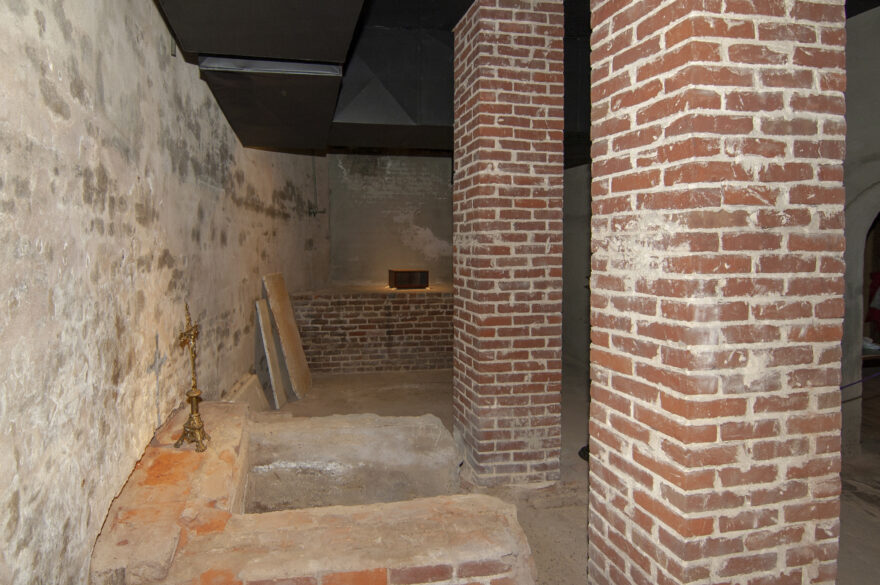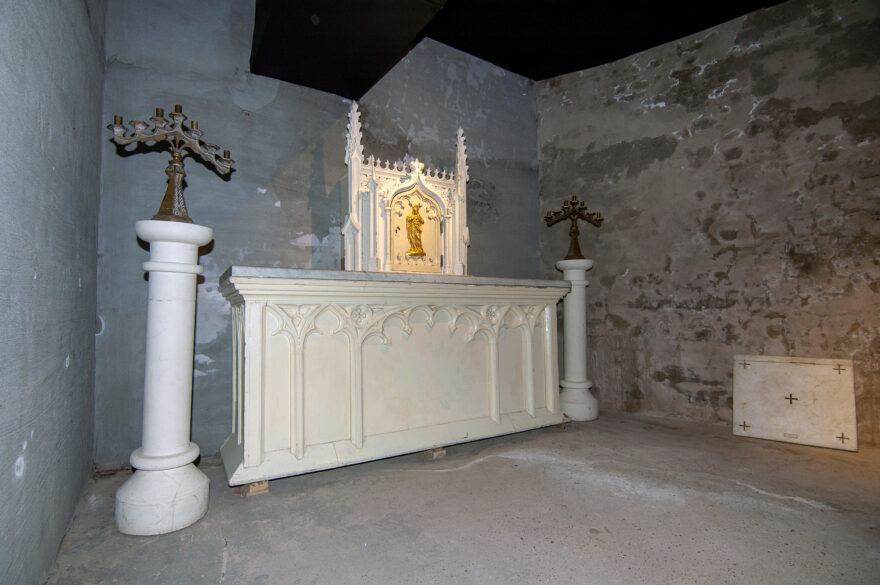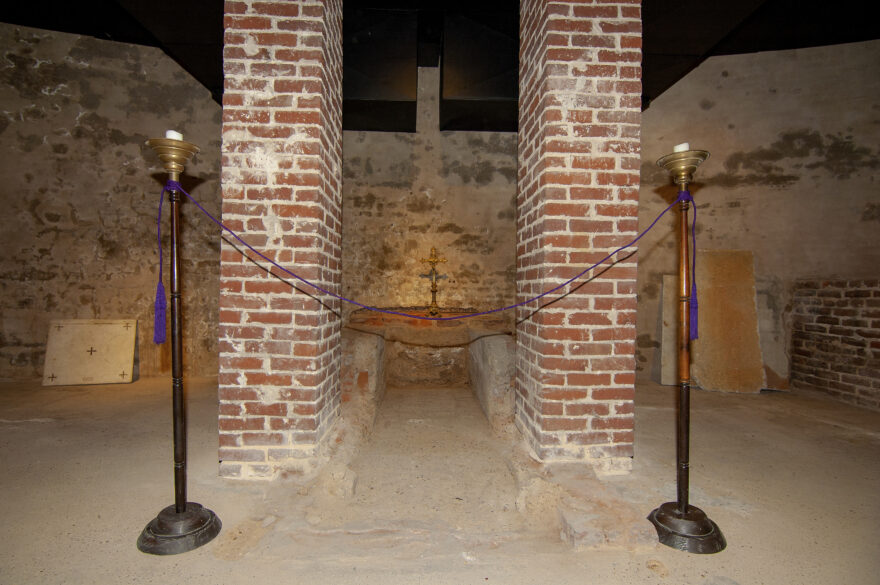From the Archives
By Mary Woodward
JACKSON – When Bishop Van de Velde arrived in Natchez on Dec. 18, 1853, he inherited a cathedral in debt and needing completion on top of repairs to what already was there.
In a letter to the Propagation of the Faith written on Jan. 2, 1854, Bishop Van de Velde describes the scene:
“When my venerable predecessor was nominated to the new Diocese of Natchez in 1841, he had not a Catholic church in this city. He had only one church and one priest in the whole extent of the diocese.
“The Catholics in general were poor and few in numbers, as they still are. He was forced to build a church here to serve as his Cathedral and he used all the money which he could obtain by gifts, subscriptions, contributions, collections, allotments, etc.
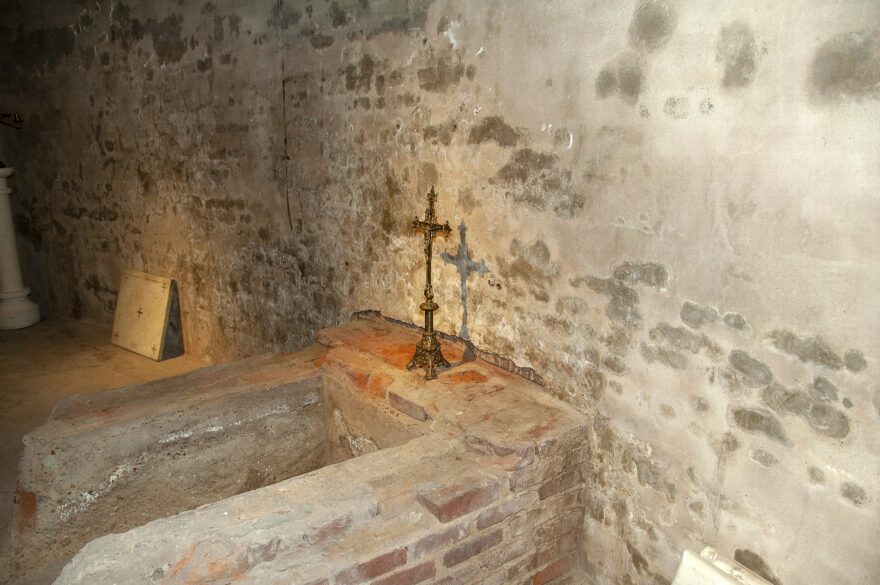
“He contracted debts in building this church which he has left half-finished. There are walls, furniture and roof which already need to be renewed. The windows have been boarded up, leaving an opening in each one in which panes of glass have been placed.
“It is absolutely the appearance of a great barn, and it has been in this state since 1843.”
Archbishop Antoine Blanc of New Orleans gifted Bishop Van de Velde with around $2000. Adding that to a parish subscription, he was able to put a slate roof on the church and with some other funds collected locally and from the Propagation of the Faith was able to do some repairs.
As a diocese, Bishop Van de Velde maintained the 11 original parishes established by Bishop John Joseph Chanche at Natchez, Paulding, Biloxi, Jackson, Bay St. Louis, Pass Christian, Vicksburg, Sulphur Springs (Camden), Pearlington, Port Gibson and Yazoo City. There were also a few dozen mission stations being attended to monthly around these locations.
During his tenure, the Bishop tried to develop Catholic education in his diocese. He invited the Sisters of St. Joseph of Carondelet to staff a new mission and future school built at Sulphur Springs. Five Sisters journeyed down the Mississippi River to Vicksburg, where they were met by the Bishop. From there they travelled by stagecoach to Canton and on to Sulphur Springs.

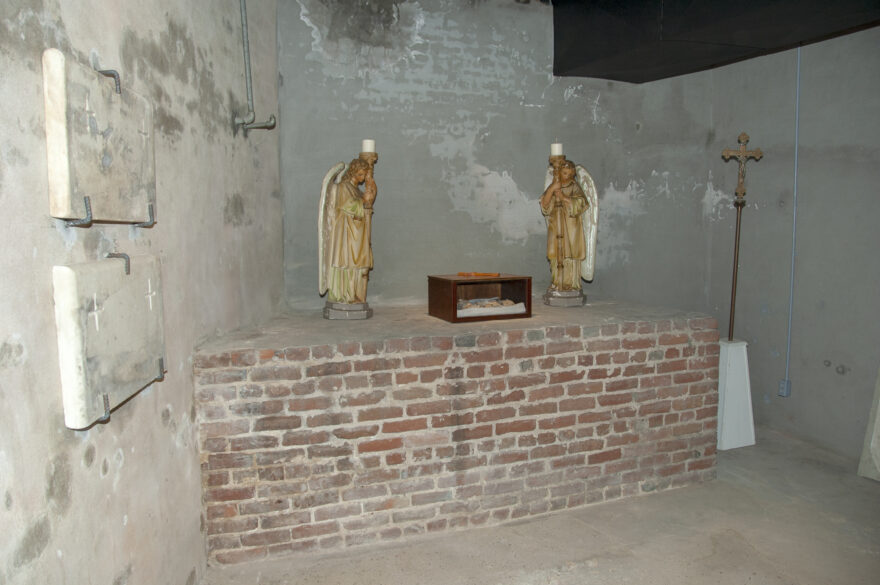
Bones from the old Spanish burial ground located behind St. Mary Basilica rest under the sanctuary of the church.
There is an interesting event that occurred along the journey which reflects an undercurrent of anti-Catholic sentiments in the State. The stagecoach owner apparently was one who expressed these sentiments as a member of the Know-Nothing movement. Simply put, the Know-Nothings believed Catholics were conspiring to subvert civil and religious liberties in the United States.
During the ride, the man, who also was intoxicated, accused our Bishop of being a priest and spat tobacco in his face several times in front of the five Sisters. Bishop Van de Velde maintained his composure and temper blocking the spew with his hat. Finally, when the stage stopped to change horses near Canton, Bishop Van de Velde threw the man out of the coach.
Another major education initiative of Bishop Van de Velde’s was to establish a Jesuit College at Rose Hill near Natchez. But this was not to be due to a lack of qualified clergy available for the endeavor and, the Jesuits were unable to accept the Bishop’s proposal.
Overall, Bishop Van de Velde was a much-loved bishop among the clergy and laity. His efforts to grow Catholic educational opportunities in his diocese show his commitment to further the faith in the State.
Back in the city of Natchez, the Bishop briefly obtained possession of the old Spanish burial ground located behind the church. The grounds had become a playground for children and dogs, with bones being unearthed and scattered. The city had even used some of the ground containing bones to level city streets. Bishop Van de Velde had all the bones gathered into two boxes and interred them in a crypt under the sanctuary in the church, then built a high wall around the rest of the area to protect the remaining graves.
In the fall of 1855, Natchez and Mississippi were under another siege of Yellow Fever. Several of the Cathedral staff were ill with the disease and suffering in the rectory next to the church. On Oct. 23, the Bishop fell on the steps of the rectory while going out in the evening to close the front gate. He fractured his leg in two places. Those inside suffering from fever were unaware of his predicament, and the poor Bishop had to lie there until morning when passersby heard his moans.
Soon the Bishop himself had contracted Yellow Fever and suffered for several days in agony. His beloved flock would pass by his room and receive a blessing from him while the fever raged. Then on Nov. 13 in the middle of blessing a parishioner, he succumbed to the illness.
After his funeral Mass, he was buried in the crypt beneath the sanctuary until 1874 when his Jesuit brothers took his remains to Florissant, Missouri. The Jesuit cemetery was relocated in Calvary Cemetery in St. Louis, Missouri, in 2006. Similar to his predecessor, he has been buried three times.
Bless his heart. His prayerful desire to be a missionary priest led him along a circuitous path to frontier mission work. We are blessed by his short term here in our diocese.
A special thank you to the St. Mary Basilica Archives Committee, who provided photos for this article and facts from their web site: www.stmarybasilcaarchives.org.
(Mary Woodward is Chancellor and Archivist for the Diocese of Jackson.)
